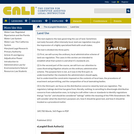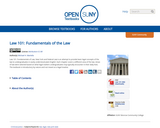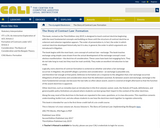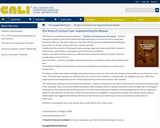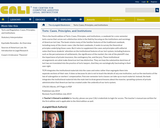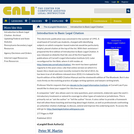
This is not a comprehensive citation reference work. Its limited aim is to serve as a tutorial on how to cite the most widely referenced types of U.S. legal material, taking account of local norms and the changes in citation practice forced by the shift from print to electronic sources. It begins with an introductory unit. That is followed immediately by one on "how to cite" the categories of authority that comprise a majority of the citations in briefs and legal memoranda. Using the full table of contents one can proceed through this material in sequence. The third unit, organized around illustrative examples, is intended to be used either for review and reinforcement of the prior "how to" sections or as an alternative approach to them. One can start with it since the illustrative examples for each document type are linked back to the relevant "how to" principles.
- Subject:
- General Law
- Law
- Material Type:
- Textbook
- Provider:
- Center for Computer Assisted Legal Instruction (CALI)
- Provider Set:
- The eLangdell Bookstore
- Author:
- Peter Martin
- Date Added:
- 01/01/2013


